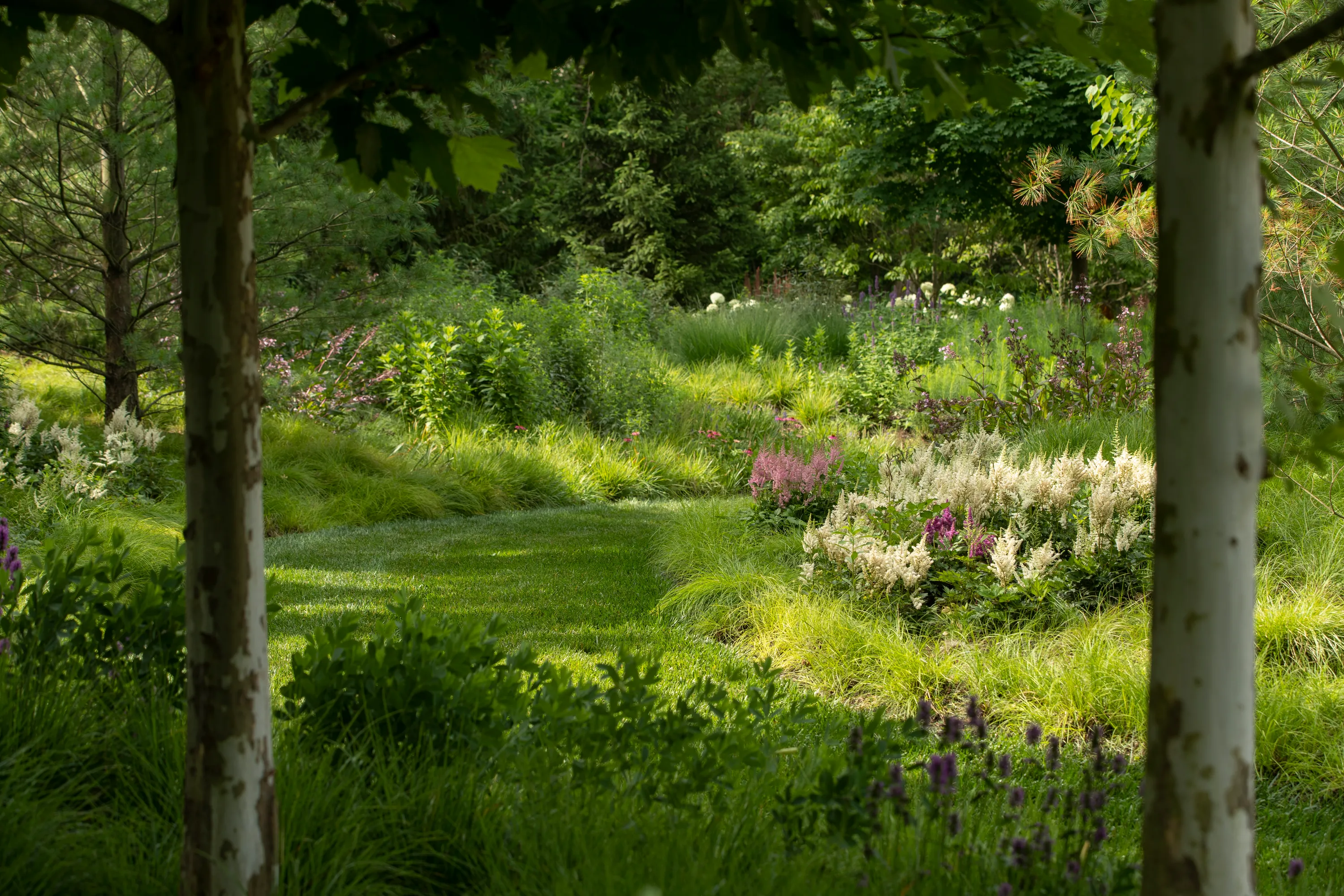
August 2025 - We’re excited to share that Matthew Macchietto was recently quoted in Veranda’s feature, “How Planting a 'Sanctuary Garden' Can Improve Your Wellbeing.” The article explores the growing trend of wellness gardens and how creating a sanctuary space outdoors can positively impact your health. Read the full story in Veranda: Link here.
Just as spirituality is subjective, so are sanctuary gardens. What might feel like paradise to one person can feel anything but to another. Because of that, Matthew Macchietto, principal at landscape architecture firm Hoerr Schaudt, reveals that sanctuary gardens aren’t copy-paste—they’re intentional.
“Sanctuary is a word that means something slightly different to each person, and the most powerful gardens are those that leave room for individual interpretation,” he explains. “As designers, we can’t script someone’s emotional experience, but we can shape conditions that invite it. Through sensory engagement, ecological presence, or cultural memory, sanctuary gardens can quietly model a more caring and attentive relationship between people and place.”
They’re Quiet
Despite the thriving habitat within their walls (or hedges), sanctuary gardens are quiet. “At its core, a sanctuary garden offers a sense of refuge—not just visually, but emotionally and sensorially,” Macchietto says. “These spaces are intentionally quiet, immersive, and restorative. They’re places where the landscape invites stillness, focus, and some kind of relief, and where it supports connection: to nature, to memory, and often to oneself.”
According to Macchietto, this is achieved via the thoughtful layering of plantings, textures, views, and even sounds (such as chimes and fountains). “[It all] contributes to a feeling of intimacy and depth,” he says.